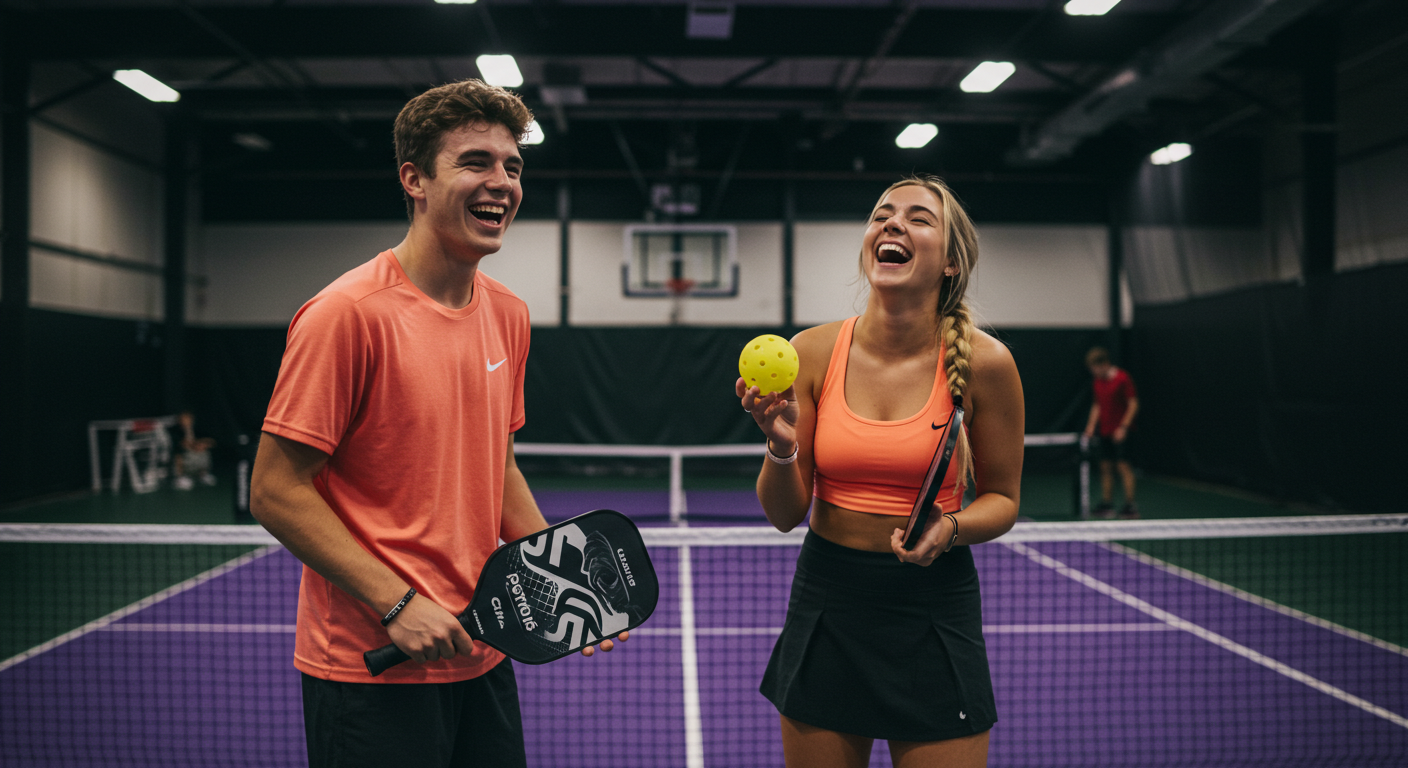Pickleball has surged in popularity over the last few years, attracting players of all ages and skill levels. Whether you’re just picking up a paddle for the first time or looking to refine your technique, understanding the key differences between beginner and advanced strategies can help you take your game to the next level.
In this guide, we’ll break down the essential skills and tactics that separate novices from seasoned players, offering insights on how you can progress smoothly from beginner to advanced play.
Understanding the Basics: The Beginner’s Approach
As a beginner, your focus should be on building a solid foundation. This includes learning the rules, developing basic techniques, and understanding court positioning. Here are some crucial beginner strategies to get started:
1. Mastering the Serve and Return
- Keep serves simple: A consistent, deep serve is better than an aggressive one that results in errors.
- When returning a serve, aim to keep the ball deep in your opponent’s court to push them back and give yourself time to move forward.
2. Court Positioning: The Non-Volley Zone (NVZ)
- New players often linger near the baseline, but experienced players know that the key to winning is controlling the net.
- Move up to the NVZ (also called “the kitchen”) as soon as possible after your return to apply pressure on opponents.
3. The Dink Game: Your First Step Toward Advanced Play
- Dinking is a soft shot that lands in your opponent’s NVZ, forcing them into a controlled, low-speed rally.
- Practicing your dink game early will prepare you for more advanced strategic play as you progress.
4. Footwork and Movement
- Good footwork is essential for positioning yourself correctly for each shot.
- Avoid excessive running—stay balanced and be ready for quick lateral movements instead of chasing the ball wildly.
5. Improve with Drills
- Regularly practicing structured pickleball drills for beginners can accelerate skill development.
- Drills like forehand and backhand dinking, third-shot drops, and serve accuracy will lay the foundation for an improved game.
Bridging the Gap: Intermediate Players’ Strategies
Once you’re comfortable with the basics, it’s time to refine your skills and introduce more strategic thinking. Here’s what you should focus on as an intermediate player:
1. Perfecting the Third-Shot Drop
- One of the most critical shots in pickleball, the third-shot drop is a soft shot that lands in the NVZ, allowing you to transition to the net.
- Mastering this shot will give you a significant advantage over players who rely only on power.
2. Controlling the Pace of the Game
- Recognizing when to speed up or slow down play is crucial.
- Instead of always smashing, use controlled shots to move your opponents around and create openings.
3. Strategic Positioning and Communication
- Doubles play requires strong positioning and communication with your partner.
- Shift as a unit to cover the court efficiently, and call out shots to avoid confusion.
4. Upgrading Your Equipment
- As you progress, investing in the best pickleball paddles for intermediate players can enhance your control, power, and overall performance.
- Look for paddles with a good balance of touch and power that complement your evolving style.
The Advanced Player’s Edge: Strategies for Mastery
Advanced pickleball players differentiate themselves with superior shot selection, court awareness, and mental toughness. If you’re looking to compete at a higher level, consider these strategies:
1. The Fast Game vs. The Soft Game
- Advanced players know when to engage in fast, aggressive exchanges and when to switch to a softer, more controlled game.
- Mixing these styles keeps opponents off balance and opens up scoring opportunities.
2. Mastering the Erne and ATP Shots
- The Erne: A sneaky move where you step outside the sideline to volley the ball out of the air, catching opponents off guard.
- The Around-the-Post (ATP) shot: A deceptive and powerful shot that curves around the net post instead of over the net.
3. Reading Opponents and Anticipating Shots
- The best players develop the ability to read body language and shot tendencies.
- Watching your opponent’s paddle angle and stance can help you anticipate their next move and react accordingly.
4. The Mental Game: Staying Composed Under Pressure
- Advanced players keep their emotions in check and stay focused on each point rather than past mistakes.
- Practicing mental resilience through visualization and breathing techniques can be just as crucial as refining your physical skills.
Final Thoughts: How to Level Up Your Game
The journey from beginner to advanced pickleball player isn’t just about hitting harder shots—it’s about developing a deep understanding of strategy, improving court awareness, and refining every aspect of your play. By mastering beginner fundamentals, honing intermediate strategies, and implementing advanced tactics, you’ll become a formidable player on any court.
So grab your paddle, hit the courts, and start applying these techniques today! Whether you’re just getting started or striving to become an elite player, consistent practice and strategic play will help you level up your game.

